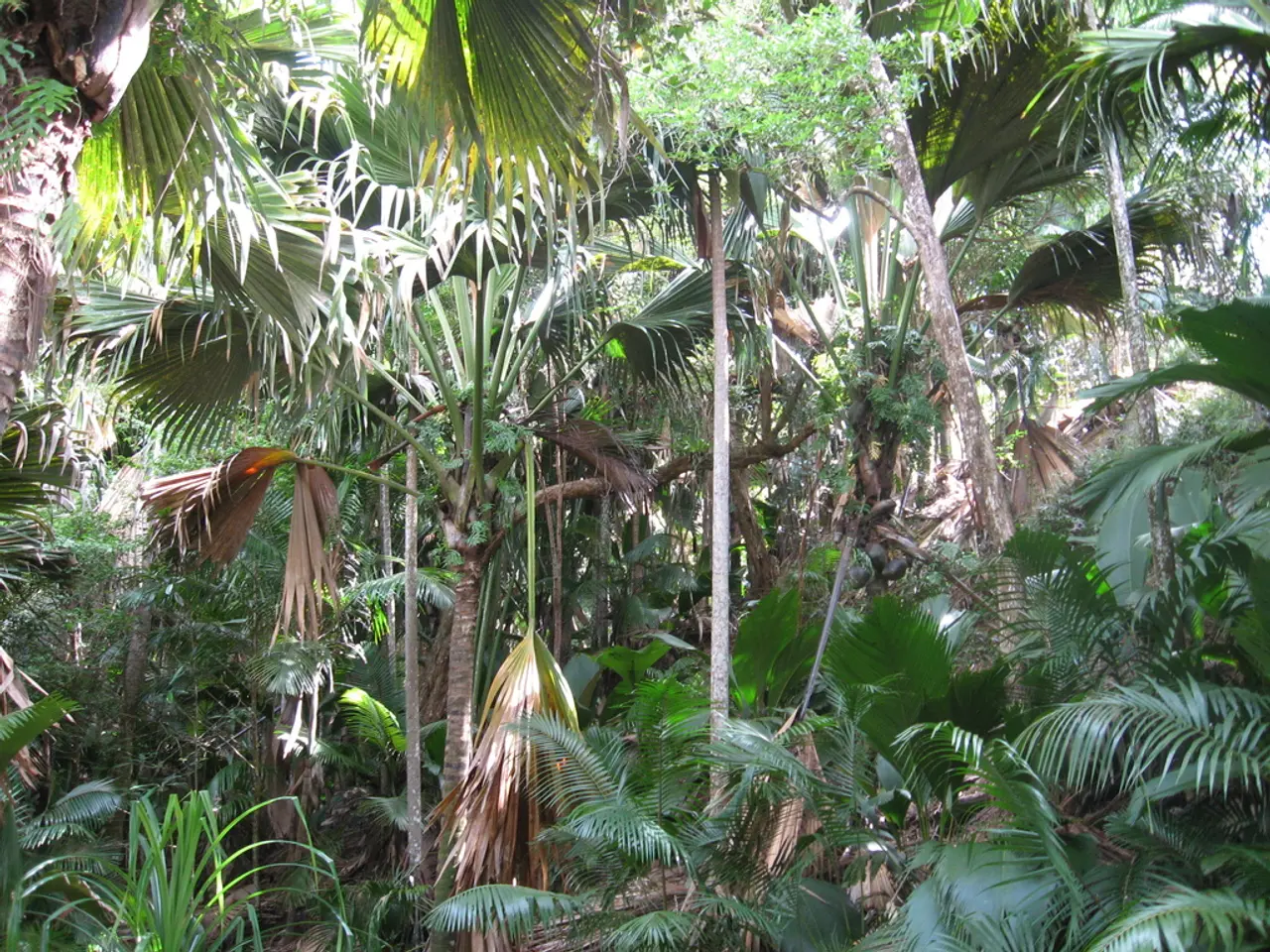Enhanced Root Development through Deep Soil Planting: Pushing Plant Roots Deeper for Improved Health
### The Significance of Deep Soil Planting in Urban Environments
Deep soil planting, a method used in urban planning and gardening, has proven to be an effective and beneficial technique for incorporating vegetation into densely built environments. This practice, which involves planting trees and shrubs deeper than their soil line in pots, offers a multitude of environmental advantages, particularly in the areas of stormwater management, air quality, and biodiversity.
#### Enhanced Root Development and Soil Stability
By allowing tree roots to extend several feet into the ground, deep soil planting results in a robust underground network that stabilises soil, reducing erosion and preventing soil loss during heavy rain or extreme weather events. This extensive root system acts as natural anchors, enhancing slope and riverbank stability and reducing the risks of landslides [1][2].
#### Stormwater Management
The deep roots increase soil porosity, which in turn enhances water infiltration into the ground. This process significantly reduces surface runoff, potentially lowering it from 60–70% to 10–20%, and slows water velocity, decreasing soil erosion and flood risks. Moreover, deep-rooted trees promote groundwater recharge by channeling rainwater deeper into aquifers, making urban forests with deep-soil planted trees crucial for sustainable stormwater management in cities [1][2][4].
#### Air Quality Improvement
Trees planted in deep soil environments have healthy growth that supports more extensive foliage, thereby increasing photosynthesis and their capacity to filter air pollutants effectively. Urban trees help purify air by absorbing gases and trapping particulates, improving local air quality. The variety of root depths, including deep roots in urban trees, contributes to a diverse and healthy urban ecosystem that enhances air purification [2][3].
#### Biodiversity Support
Deep soil planting supports robust tree growth and encourages a diverse understorey of plants, which altogether foster richer habitats for urban wildlife. This diversity of plant species and structures within naturalist or urban gardens increases urban biodiversity, helping sustain pollinators, birds, and other beneficial organisms. A well-established underground root system anchors these complex ecosystems [2].
#### Additional Benefits
Deep soil planting also aids in regulating urban microclimates. By supporting large, healthy trees, it contributes to shading and evapotranspiration, which cools urban areas and helps mitigate the urban heat island effect [2][5]. Furthermore, large trees with deep roots provide social, economic, and psychological benefits, including enhanced green space amenity, increased property values, and improved mental well-being [4].
### A Summary of Benefits
| Benefit Area | How Deep Soil Planting Contributes | |----------------------|-------------------------------------------------------------------------| | Stormwater Management | Enhances infiltration, reduces runoff, recharges groundwater | | Air Quality | Supports larger canopy for pollutant filtration | | Biodiversity | Supports diverse plant and animal habitats via robust ecosystem support| | Soil Stability | Prevents erosion and landslides through extensive root anchoring | | Urban Heat Mitigation| Cooling via shading and evapotranspiration |
In conclusion, **deep soil planting significantly enhances the health and functionality of large urban trees**, yielding critical ecosystem services such as stormwater control, improved air quality, and biodiversity support, while also contributing to resilience against climate and urban stressors [1][2][4]. This sustainable approach offers a solution to the challenges of incorporating vegetation into densely built environments, contributing to the creation of greener and more sustainable cities.
For even more effective stormwater management, diversifying root systems by combining deep-rooted trees with plants that have surface roots can further improve water management in urban areas. By incorporating these practices into urban planning and gardening, cities can promote a healthier, greener, and more resilient environment for their residents.
[1] University of California, Davis. (2020). Deep Soil Planting: A Sustainable Landscaping Technique. Retrieved from
Deep soil planting significantly enhances the health and functionality of large urban trees, supporting robust tree growth and encouraging a diverse understorey of plants. This technique, used in both urban planning and gardening, offers benefits in the areas of stormwater management, air quality, biodiversity, soil stability, and urban heat mitigation.
Furthermore, by diversifying root systems by combining deep-rooted trees with plants that have surface roots, cities can further improve water management in urban areas, promoting a healthier, greener, and more resilient environment for their residents.




